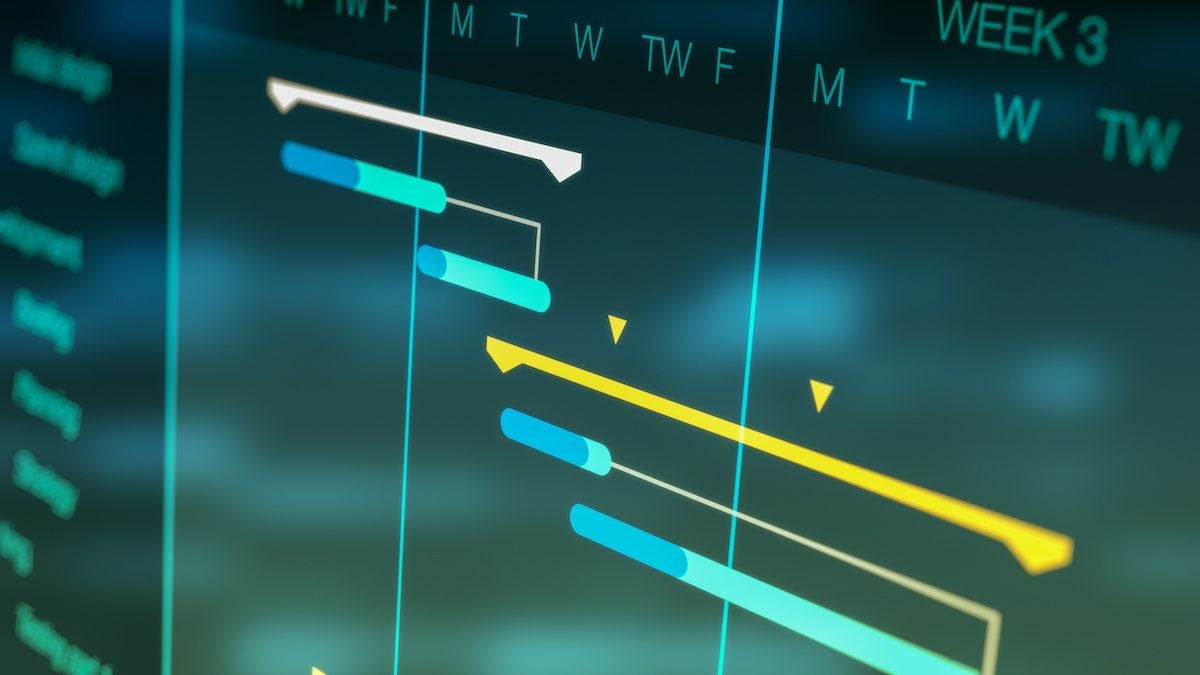For those new to the concept, a Gantt chart is a specific type of bar chart meticulously designed to visualize project schedules. Its main function is to present a clear timeline overview of an entire project, including its main components: tasks sub-tasks as well as milestones and objectives. The achievement of any project is contingent on this visualisation.
The clarity of a Gantt chart’s design makes it a vital tool in project management. Team members and project managers can easily determine the crucial pathway to project completion thanks to the chart’s ability to highlight dependencies and timelines. Knowing what tasks are essential for completion, what could be running concurrently, and the potential bottlenecks that could arise is vital.

The critical path is the sequence of projects which, if delayed, may extend the duration of the project. The critical path needs to be identified and managed to ensure that projects are completed on time. Gantt charts help to make this process more transparent. Through the analysis of a Gantt chart, project managers can determine areas that require immediate attention, and are able to allocate resources accordingly.
A Gantt Chart consists of a horizontal time line that represents the duration of a project, as well as vertical bars, also known as lines, which represent the individual tasks along with their start and finish dates. Each task is visualized in the form of a bar, and the interdependencies between them are displayed through the positioning of these bars. Milestones that mark major achievements of a project are usually marked by using particular symbols or colors.
Gantt charts are not only useful for project managers. They also help facilitate team collaboration. The timeline of the project, as well as individual responsibilities, are readily available to all team members. A shared understanding of the progress of the project and its goals creates a unified environment where everyone is on the same team.
Monitoring the progress of the project is an additional aspect that Gantt charts excel. Through a glance at the chart team members and other stakeholders are able to assess the current status of each task as well as the overall project. This real-time transparency allows quick identification of any issues or delays, and allows for mitigations.
The range of applications for Gantt chart is extended to different kinds of projects and industries. Whether you’re managing a software development task that requires multiple coding tasks as well as a construction project with complicated dependencies, or even an marketing campaign with a variety of deliverables, Gantt charts can adapt to suit your needs.
Gantt Charts: A Magical Tool for Project Success
Imagine that a project manager is working on a construction project for a new construction. The project involves a variety of tasks, from the pre-construction of the site to the foundations being laid to the interior design. Delays could delay the date for the completion of the project.
With the aid of a Gantt Chart, a project manager can plan and track each step with accuracy. The dependencies are now evident. Interior design needs to be completed prior to foundation work is completed, landscaping and construction can be started while other work is being completed. Resources are allocated according to the most critical route. This may include structural work.
Tools for Project Management of the Best: Gantt Charts in Focus
Gantt Charts are a vital instrument in managing projects. Visual aids can simplify project planning, execution, and monitoring. They let teams collaborate, be in sync with the project’s goals, and react to any deviations from the plan.
Gantt Charts: Keep your projects on time
What distinguishes Gantt charts apart is their capacity to keep projects on track and ensure on-time delivery. Gantt charts provide a thorough and clear picture of timelines for projects, dependencies and critical routes. This allows project managers and their teams to make well-informed and timely decisions.
The Gantt chart is an effective aid in the ever-changing world of project management. Changes in priorities and unexpected challenges priorities are not uncommon. Gantt charts are an extremely effective tool for managers that strive for excellence. Its versatility, efficiency and ability to visualize success make it a vital part of their arsenal. Think about using Gantt charts as a way to maximize your project’s potential and to deliver it on time.